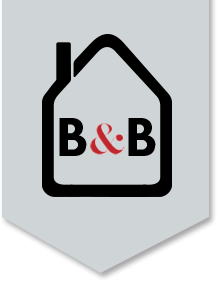Evolution of House Size in America
Why bigger is not always better
Why bigger is not always better
What is sustainability? How does it affect me? What does it have to do with tiny living?
How tiny offices are changing our perspectives on the working environment
What is Minimalism & what does it mean for you?
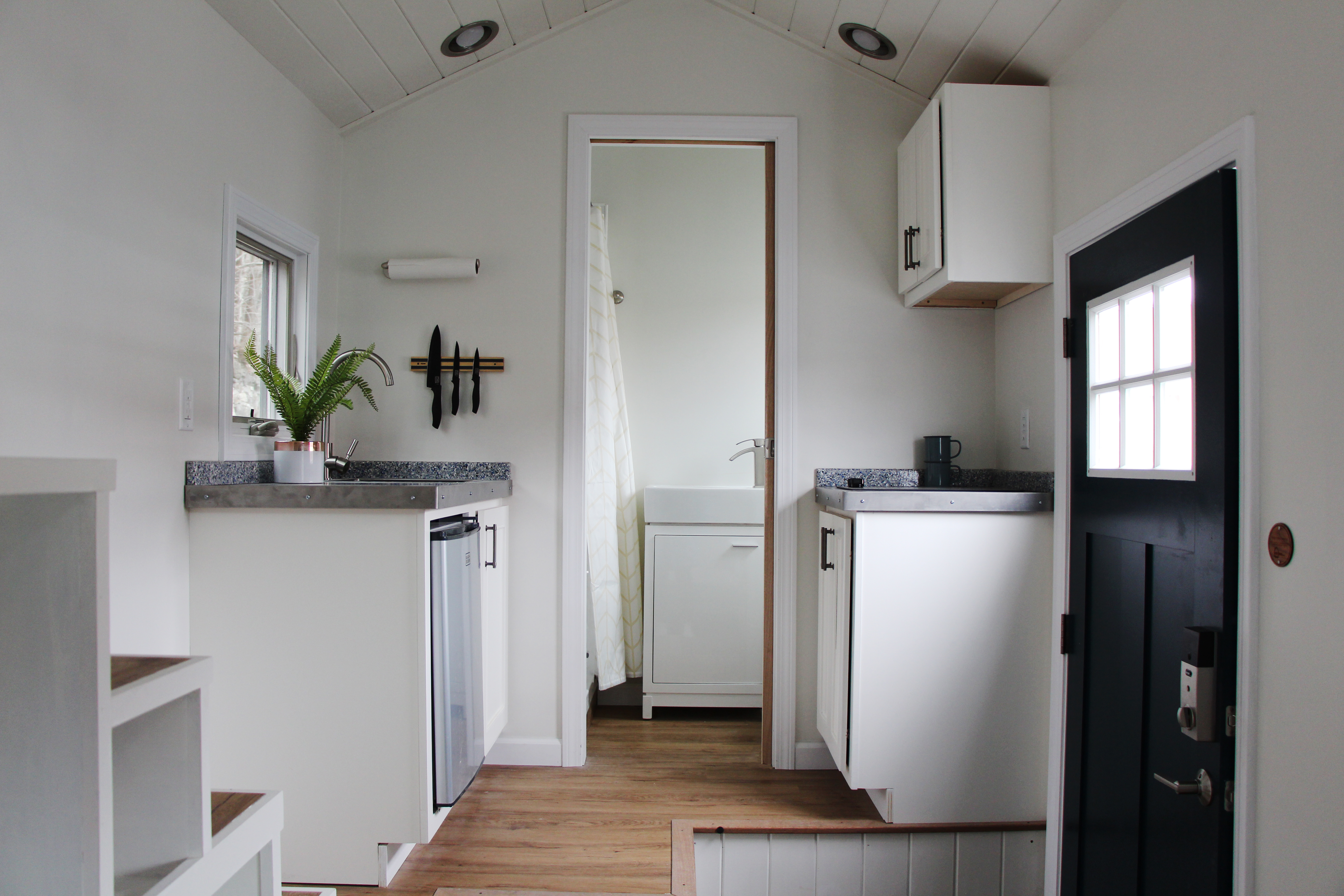
Much of saving money on a tiny house build involves understanding the many different options available to you in the tiny house buying process. Here are some points to consider when saving money in your tiny house.

This is the single greatest money-saving action we can suggest. Custom designs will cost more than a house that’s already in our Signature Designs, and this applies to every step of the process, not just the design phase. Even after the designer’s finished with the blueprints, the builders will need to spend more time on each aspect of the house, since it’s not one they’ve built before. Time is a very large percentage of the final cost, and cutting down on our time spent working through new challenges with a custom tiny house will cut down your overall final cost.
But don’t worry, you can still make your tiny house your own, even if it’s picked out of our catalogue of Signature Models. You’ll be able to choose all the colors, materials, and fixtures for your tiny house.
We offer three options for making your tiny house your own:
CUSTOMIZATION CHOICES, like exterior and interior wall materials, appliances, colors, open shelving versus cabinetry with doors, are always free— these choices will be reflected in the materials and installation cost. These choices don’t require the tiny house designer to change anything about the blueprints of the house.
ALTERATIONS TO OUR EXISTING BLUEPRINTS are $800, which includes two free revisions. Any further revisions are billed at $50 per hour of the designer’s time. The extra build time and materials for an altered floor plan will be built into the quote. Alterations include adding a loft to houses where possible, changing window sizes and locations, designing a custom staircase, and changing the roof shape where possible.
ENTIRELY ORIGINAL DESIGNS are available when we will be building three or more tiny houses; there is a design fee of $2500. This includes two free revisions. Any further revisions are billed at $50 per hour of the designer’s time. The extra time taken to build a custom, rather than a mass-produced, tiny house will be built into the quote. Custom tiny houses generally start at $90,000.
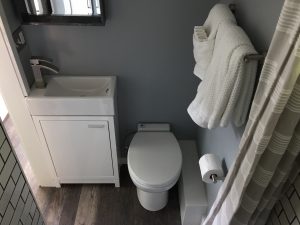
We can build anything you want as long as it’s within the RVIA’s safety standards. One of the owners of B&B Tiny Houses, Mitch, likes to say “we’ll build a slide off the roof” (we haven’t received an order for that one yet)! However, just because we can build something doesn’t mean it’s not going to cost money. Similarly to the previous section on choosing a standard design, choosing standard materials that we already know how to install and that they work well in tiny houses will save us time and save you money.
Our list of common upgrades for our tiny houses doesn’t represent everything we can do and everything we’ve ever built into a tiny house, but it’s a great representation of what upgrades we are comfortable making and already know how to install efficiently. We are happy to research, price, design for, and build with materials or fixtures that aren’t on that list: we’ll just have to build the extra time spent on non-standard materials into the final price. Don’t worry: we think you’ll be very happy finding exactly what you want within that extensive list. Sometimes we even have leftover materials from a previous project that might work well in your house that we can offer you a discount on: we’ll be sure to let you know if so.

Another way to save money on your tiny house is to go with basic materials. Each tiny house is listed with a starting price. This starting price includes basic materials and fixtures. Here’s a list of our basic materials and what an upgraded material in the same category might be. The difference between tiny houses using all basic materials and tiny houses using all upgraded materials can be quite significant in the final total.
The kitchen shown in this Hoosic tiny house uses all basic materials included in the starting price: a two-burner built-in cooktop, a small kitchen sink, a mini-fridge built into the cabinetry. Of course, you can upgrade this kitchen to include an apartment-size fridge or built in fridge and freezer drawers, a propane stove and oven, a large undermount sink, and a convection oven/microwave (see these features in the Kinderhook tiny house), but this will, of course, cost much more. Being frugal with your appliance choices makes for a great deal of savings in the end.
| Starting Price Includes: | Upgraded Tiny House Might Include: | |
| Exterior | Vinyl Clapboard | Vertical Solid Wood Shiplap |
| Roofing | Asphalt Shingle | Ribbed Metal |
| Interior Walls | Sheetrock | Solid Wood Shiplap |
| Climate Control | In-Wall Electric Heater | Mini Split (Electric Heating & Cooling) |
| Cooking | 2-Burner Glass Cooktop | Stainless Steel 3-Burner Propane Stove/Oven with Range Hood |
| Refrigerator | Mini-Fridge | Apartment Size Fridge (24″ w x 68″ h x 25′ d, 10.1 cu. ft. |
| Dishwashing | Kitchen Sink | Kitchen Sink & Dishwasher (Certain Models Only) |
| Shower/Tub Insert | Vinyl | Custom Tile |
| Bathroom Sink | Mini Sink with Vanity | Mini or Full-Size Sink with Vanity |
| Washer/Dryer | Not Included |
Washer/Dryer Combo (Certain Models Only– Not Available with Solar Power)
|
| Toilet | Your Choice- Inquire For Pricing | Your Choice- Inquire For Pricing |
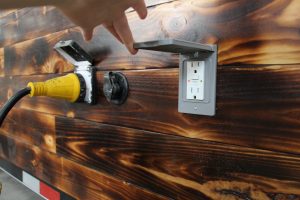
Going off-grid in a tiny house is possible, but the up-front cost isn’t cheap. Likewise, if you’ll want to run electric appliances in your off-grid tiny house, you can, but not as many or as often as you might when you’re on grid. The cost of setting up a solar system capable of running appliances in the same way that one normally might in an on-grid situation can double the cost of the tiny house itself! Running large appliances like a washer/dryer, or many appliances at once, will require large battery storage as well as an array of many solar panels: more that can fit onto the roof of a tiny house.
If you will go with off-grid solar and want to be frugal (or if you’d like to travel with your solar panels), you’ll have to eliminate most electric-run appliances from your list and plan on using other sources of energy, like propane.
The simplest, cheapest power source for your tiny house is running an extension cord and a potable water hose (with heat tape in winter!) from a building that already has power and water. Many people who live in their tiny houses full-time park their houses beside or behind the house of a friend, relative or landlord. Others may lease or purchase a property that already has a power source. The cost of these hookups is included in the starting price of all our tiny houses.
Check out this blog post for more info on how to hook up your tiny house to water and power.
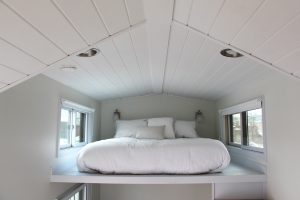
Choose your favorite of our Signature Tiny House Models and then get an Instant Estimate for that house with the features and fixtures you want.
When you’re comfortable with your price, contact us to get started.
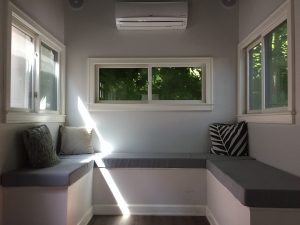
Why? Tiny houses are smaller. The cheapest square footage in any home, whether tiny or not, is empty space. The most expensive space per square foot in a home is the kitchen and bathroom, which have appliances installed that need electricity and plumbing. A tiny house on wheels still has all the appliances and fixtures: a toilet, shower, and sink in the bathroom, and a fridge, sink, and cooking device in the kitchen, just like a “big house”; what we’re eliminating when building tiny is the cheapest space: empty floor space. That’s why the cost per square foot is higher in a tiny house.
However, in a tiny house, the overall material cost is less than in a traditional house, simply because there’s less space, which means less material, labor, and time to build.
With a tiny house on wheels, whether you’re planning to buy land, lease a spot in an RV park or stay in the backyard of someone you’re renting a space from, you’ll need to factor this cost into your overall budget. Tiny houses can be connected to RV hookups in an RV park or permanently hooked into water, septic and sewer. If you’re buying raw land (with no water and power) you’ll need to have a well dug and power connected.
Generally when buying a traditional home it’s already hooked up to utilities and is being sold with a plot of land. Therefore, be sure to factor in not just the cost of the tiny house itself, but the land and hookups when comparing the cost of a tiny house to a traditional home.
B&B’s tiny houses on wheels are certified by the RVIA and therefore financed like RVs. RV financing can be through your own bank or through a national lending institution. As an example, as of 12/21/18 Lightstream’s website lists their RV loans up to 84 months, or 7 years. Traditional mortgages are often 15 or 30 years. Tiny houses, because of their smaller price point and smaller finance time, are usually paid off before a traditional mortgage.
Remember, though, that RV loans are just for the tiny house itself, not the land the house is on. If you’ll be buying a piece of land to put your tiny house on, that would be either paid for all at once or financed separately.
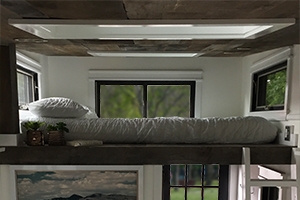
Tiny houses are smaller than traditional houses, which means less space to heat or cool. Because they’re on wheels, we never know where they’ll end up, so we build our tiny houses to withstand any climate in the continental United States. Our shop is in a rather extreme climate zone so we understand the need to be warm in the winter and cool in the summer. The tiny houses on wheels we have built have been toasty warm in New Hampshire in negative temperatures as well as nice and cool in the Texas heat. Double-glazed windows, high R-value insulation in the floor, ceiling and walls, and efficient heating and cooling systems used in B&B Tiny Houses make for some pretty tiny utility bills.
B&B Tiny Houses’ longest tiny house is 32′ long (on a 30′ trailer with a small overhang) and our widest tiny houses are 10′ wide (the Kinderhook and the Taconic Park Models). If you’re not planning on moving your tiny house, “large” tiny houses can be a great way to get some extra elbow room. When you start going bigger than 10′ x 30′ though, depending on all the other factors mentioned above it may make more financial sense to just have a traditional permanently-affixed home, park home, or modular home built.
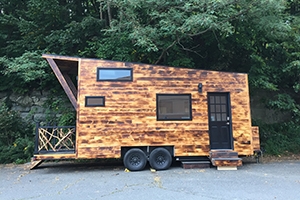
At B&B Tiny Houses, we are often asked if a prospective tiny home owner should buy a custom tiny house or choose from our catalog of tiny house designs. Most of our clients will ultimately decide that they want to customize an existing tiny house design for the reasons below.
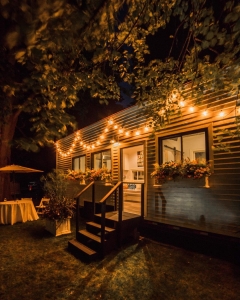
Because we have 9 models of pre-designed tiny houses, most prospective tiny house owners will find a plan that will work for them. With this option, B&B customers will get to choose the finishes on their tiny house for no additional cost. This means that clients will have the option of picking the finishes for the interior and exterior of their tiny home: including the roofing, ceilings, walls, fixtures, and floors. The customization process of the pre-designed tiny homes allows owners to add their own style to their tiny house. The pre-designed tiny houses also allow clients the option of changing the blueprint–i.e. adding an extra closet or rearranging kitchen appliances. Read more about our blueprint changes fee.

Perfect for weekend vacationers, the Prospect has a beautiful observatory bedroom with large sliding doors on three sides.

The Sentinel is designed for someone who wants to live tiny but won’t compromise on kitchen space. The kitchen has a full size fridge, oven, and sink, and ample cabinets.
Customers also have the option of working with B&B’s design team to create an entirely original design. Original tiny house designs allow you to create the exact tiny home that you’re envisioning, but due to economies of scale—i.e. custom houses taking longer to build due to the fact that each one is unique and not able to be mass produced— this option can be quite costly. In addition, with a custom house, there is an extra fee to design the sketches of the home and create an estimate. Read more on original tiny house design fees. Custom plans and builds come at a substantial increase in cost and build time, but they also allow those that are willing to pay more to receive a beautiful tiny house designed for their exact needs and lifestyle.
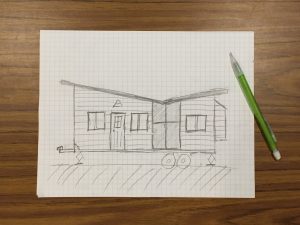
Clients can give our designers sketches of their dream home and see their ideas come to life.
Ready to begin your tiny house buying process? Fill out the form below to get in touch with us.
Before we talk about the best way to finance your tiny house, let’s talk about the different types of tiny houses. Please note that securing finance for your tiny house will have different processes depending upon if your tiny house is on wheels or on a foundation. Permanently-affixed tiny houses will be able to get traditional construction loans which can include site work. For this article, we will be focusing on financing a tiny house on wheels.
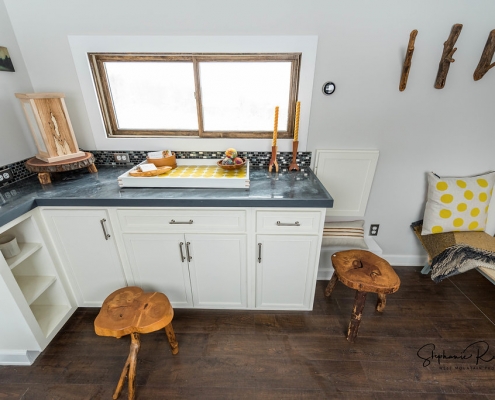 The Brodie Mobile Office photographed by Steph Rapsiarda
The Brodie Mobile Office photographed by Steph Rapsiarda
Building a tiny house of your original design through B&B allows you to create the exact tiny house that you’re envisioning, but due to economies of scale—i.e. custom houses taking longer to build due to the fact that each one is unique and not able to be mass produced— this option can be quite costly. The second option is to buy a pre-designed tiny house. There is a wide variety of options and at B&B we will allow you to customize materials, colors, and appliances (click here for all of the customizable options at B&B). This is a great option for those that want to stay on budget and still put their personal touch on their tiny house.
The third option is to buy a wood-framed tiny house shell. A tiny house shell has the exterior complete and the interior incomplete. Shells can have windows, doors, plumbing, and electric complete or incomplete depending upon your needs and budget. Lastly, you have the option to buy a steel frame kit for your tiny house. This option ensures that you have a professionally built frame and allows you to customize your tiny house how you please; however, we do not recommend DIY options for anyone that does not have construction experience. The shell and steel frame option are not certified by RVIA, meaning that it would be more difficult to get a loan. Both of these last two options can be a great choice for someone that wants to complete their tiny house by themselves or wants to self-finance their own tiny house in stages. The RVIA cannot certify shell or frame kit options because the tiny house will not have been finished in a RVIA certified location; however, it may be possible to get a personal loan for the shell or frame kit.
If you are DIYing your tiny house, consider all the costs associated with building, not just the materials cost.
Once you have decided on the best tiny house option for you, you will have a better idea of the loan you will need. Because B&B is RVIA certified, you would be qualified to apply for an RV loan for any of our turnkey tiny houses on wheels. When determining your tiny house budget, you will also need to consider monthly costs such as electricity, maintenance, insurance, and where you will be keeping your tiny house.
Read our article on the all-in costs of a tiny house versus a traditional house.
In addition, if you need site work–grading, clearing trees, adding a pad–or infrastructure–fresh water, waste water, and power–you’ll need to consider these costs in your total budget. You will want to estimate these costs before you decide the amount of the loan you’re willing to take out. Just like a home mortgage, your income, credit score, market factors, and down payment will all affect the terms of your loan. After you’re pre-approved, B&B will schedule a design session with you in order to get your final quote.

The Brodie Mobile Office photographed by Steph Rapsiarda
Improving your credit score will help you lower your monthly payment. This is because the bank views those with higher credit scores as being more reliable and thus will give them better rates and bigger loans. Here are 11 ways to improve your credit score.
The more that you save for your down payment, then the lower your monthly payment will be, so start adding to your tiny house piggy bank!
After you’ve chosen the best type of tiny house for your needs, whether it’s a DIY frame, shell, or a turnkey tiny house that’s move-in ready (and RVIA-certified), you’ll be able to get an estimate on the floor plan you want and start researching your loan options.
It’s a good idea to contact a few different financial institutions to get the best deal for you. Check out all your tiny house financing options here including getting a Tiny House Loan through Adams Community Bank, an RV loan through Lightstream, and a personal loan through your own bank or credit union.
Learn more about our process or fill out the form below and one of our tiny house experts will reach out to you.
